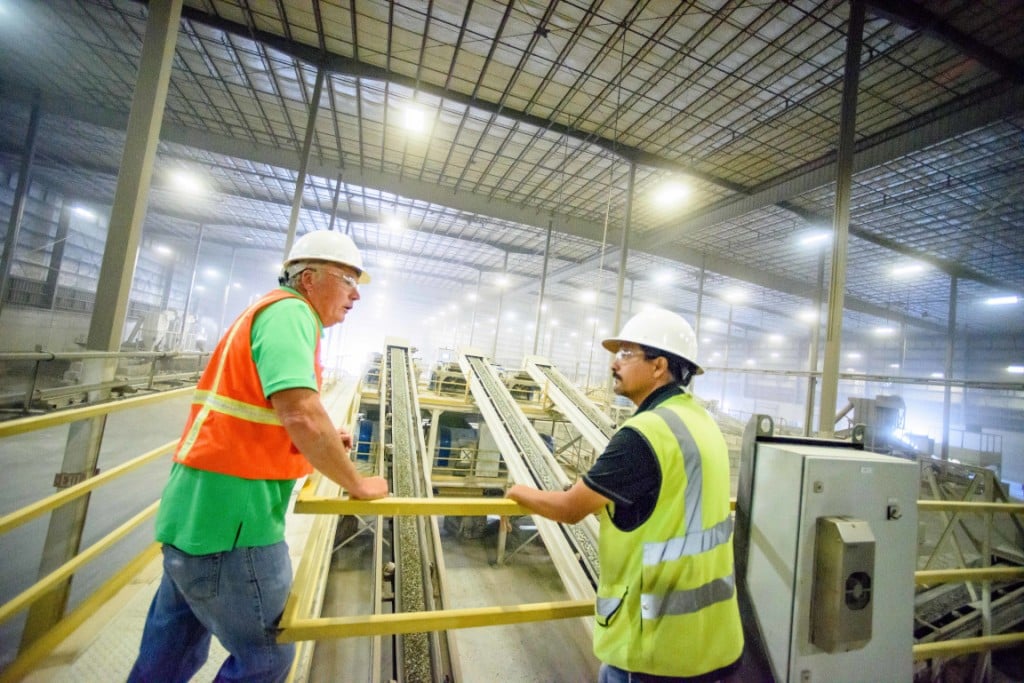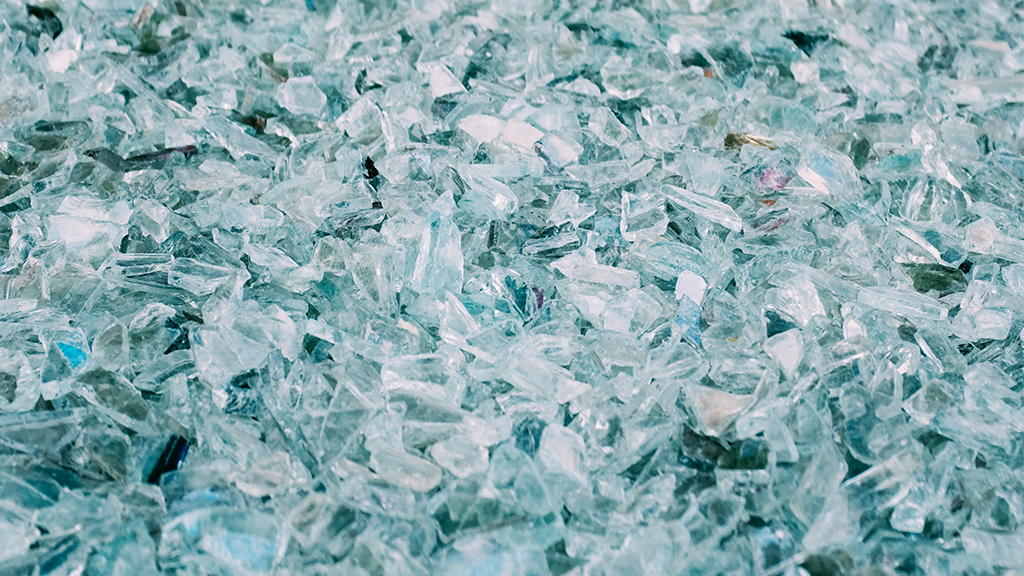Dispelling the myths surrounding glass recycling
Strategic Materials' Curt Bucey breaks down the facts and fiction

Strategic Materials, based out of Houston, Texas, has close to 50 plants in every region of the U.S., several in Mexico and three in Ontario: two in Brampton, one in Guelph. The company, which recycles approximately 3 million tons of glass each year, is by far the largest recycler of glass in North America, and one of the largest in the world.
Curt Bucey, Strategic Materials' Executive Vice President and Chief Commercial Officer, was a key speaker at the MRF Forum 2020, held in November. He says in the media there are way too many negative stories about glass recycling, and false information is circulating to the public and through the recycling industry. Bucey has read articles claiming everything from the Chinese National Sword policy affects glass and contamination rates, to it's not safe to process at all.
"Sometimes I'm pretty amazed at what I'm reading and a little disappointed that press, and cities, don't reach out to get a more balanced understanding of what's going on in the glass recycling industry," says Bucey. "It seems these stories seem to get passed from city to city, and newspaper to newspaper.
"They say things like ‘glass wears out equipment, it's too expensive to process, there's no end markets, and it's unsafe.'" Bucey says these kinds of statements are fiction. He recently decided to look at every one of the false claims about glass recycling he has found, or heard, and set the record straight.
Myth 1: Glass cannot be recycled
One of the first glass recycling myths Bucey tackled is that glass simply cannot be recycled, for various reasons: if it's broken, if colours are mixed, or if it has lots of contamination.
He said this is false and their business is proof, as the glass they receive is very often mixed in colour, broken and it much of it is very contaminated. At Strategic Materials plants, all kinds of glass is effectively and profitably recycled every day.
"We take mixed glass and we run it through colour sorters, and we end up with a finished product that we sell into the container, fiberglass and other end markets."
Myth 2: The value of glass is declining due to contamination
Bucey also hears a lot that the value of glass is declining. He says as with most commodities, the value depends on the cleanliness or purity of the incoming material, and this gets lost in a lot of the discussions.
"If we have good clean glass it's worth a positive, and the dirtier more contaminated the glass gets, its value goes down. It's just common sense that glass with lots of shredded paper contamination has less worth than clean material. It is the same for all recyclable materials."
So what are some of the reasons for high levels of contamination?
"Certainly, we all know that contamination at the curb has increased over the years," says Bucey. "And a lot of that floods through to us. If MRFs are running too fast, if they haven't put investment into their glass cleanup systems, if they don't have their systems turned on or haven't maintained it, all those factors affect the quality of glass we receive and its value.""When we hear that glass value is declining, we really need to ask, what's the quality level?"
He adds that there are things that can be done to reduce glass stream contamination once a MRF and Strategic Materials have set up a matrix. "We can go in and help show a MRF how to increase the quality of their material, and by increasing the quality, increase the price they get, which then allows the MRFs to calculate a better payback period."
Myth 3: Glass is unsafe to process
At Strategic Materials they have a Total Recordable Incident Rate (TRIR) of less than two, based on one year of operation, at all of their plants in North America.
"If you look at the MRF industry, on average it's around nine. Since we process almost exclusively glass, if glass was unsafe, our score in theory should be a lot higher than the MRF average.
"It really comes down to the process you have to manage safety. It doesn't have anything to do with the material."
Myth 4: Glass contaminates recovered paper and plastics streams
Bucey says the myth they probably hear the most is that glass contaminates paper and plastic streams, causes rejections, and lowers the value of those materials.
"Single-stream collection contaminates everybody's material. It's kind of how it works," he says. "What I get as input is much, much more contaminated coming from MRFs than any of the other streams that supply us."
"I wanted to understand the comment that glass effects paper and plastics stream values," he continues. "We reached out to over 80 percent of all the MRFs in the United States, and asked them the following question: "How many loads of paper or plastic have you had rejected, or downgraded, in the last two years due to glass contamination?"
The answer came back as zero rejections or downgrades for paper, and zero for plastics. He says with old systems that were out there, fifteen or twenty years ago, when glass rode along the conveyor belt and could end up in the baler, and when it was taken out in the back versus the front, many more rejections and downgrades would have occurred. But this is not the case today.
Myth 5: Glass is too expensive to process
"Here, I started with equipment manufacturers and I said, help me understand all the costs of equipment and the MRF, and help me understand the cost of processing glass. We put together a chart and what it really shows is that a glass processing system per ton is one of the cheapest, if not the cheapest system for a MRF to put in."
They hear a lot that the cost to process glass is high.
"We did a similar study at the same time, and we took a look at some P and L (Profit and Loss) from different MRFs and tried to understand them."
What they found is that MRF systems tend to operate off of an average cost model.
"If a hundred thousand tons are brought in, and it's a million dollars to process it, they divide a million by a hundred, and they come up with an average processing cost. That's not the right way to look at it. You need to ‘peel back the layers of the onion' and go down to a cost accounting methodology. The point is to look at costs a little bit differently.
"When you do that, you find out the glass has low capital costs, very little increase in building footprint required, there's no direct labour generally on the glass line, there's hardly any Indirect labour, and there's low energy costs. There's also no direct supplies like baling wire. For the maintenance cost, even though that gets advertised as being high, it's not, and it has little management time."
Another part of the high-cost myth is the notion that glass recycling is very hard on the equipment used to process it and so is expensive in terms of replacements and repair of machinery and systems. Bucey says this is just not true. He says, again, maybe for the MRF of 15 years ago this might have been true.
"With respect to MRF layouts, 15 years ago glass would run all through the system and you'd have people picking material, and if they weren't very good at picking the glass up, it would get mixed in with the paper, and it ended up in a baler, and glass is abrasive. So, with older style MRFs, there was some truth to this claim, but it has been overstated."
In the modern MRF, he says there's very little problem with glass residue damaging equipment downstream, other than at the glass breaker and star screen at the front of the process, which is regular wear and not that expensive to change.
Myth 6: Glass has no end markets
"Sometimes this is really a local MRF telling a collector, ‘We don't want glass.' It's not that there aren't end markets. It's that the MRF is full and doesn't want any more glass. In general, the markets for glass are good. I don't have inventory piling up at any plants. Pretty much, what comes in today goes out tomorrow.
"There are some areas of the country where glass markets are a little challenged," continues Bucey. "Certainly, up in the new England area, there's a lot of people, a lot of glass, and not as many glass plants. In order to use that material, it's shipped down to North Carolina, which is a pretty substantial freight bill, and that tends to interfere with the economics and the ability for glass to be recycled. It's the same problem in the Pacific Northwest.
"But overall, there is more glass than we have local markets for right now, with the exception of those two areas. Pretty much everywhere else, I'm looking for more material."
Curt Bucey is the Executive VP and CCO, Strategic Materials, based out of Houston, Texas.



